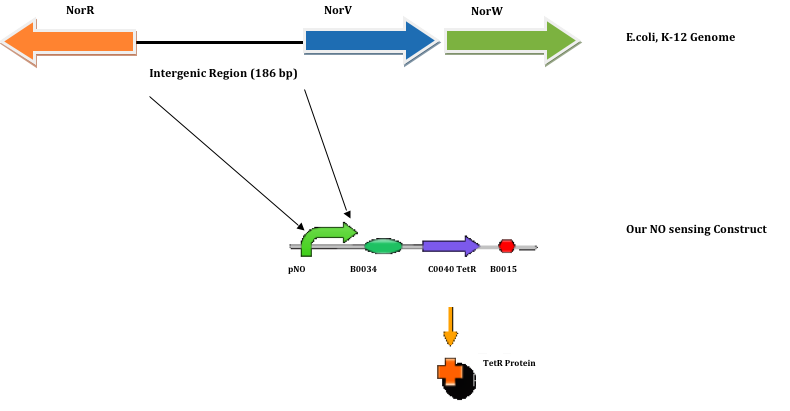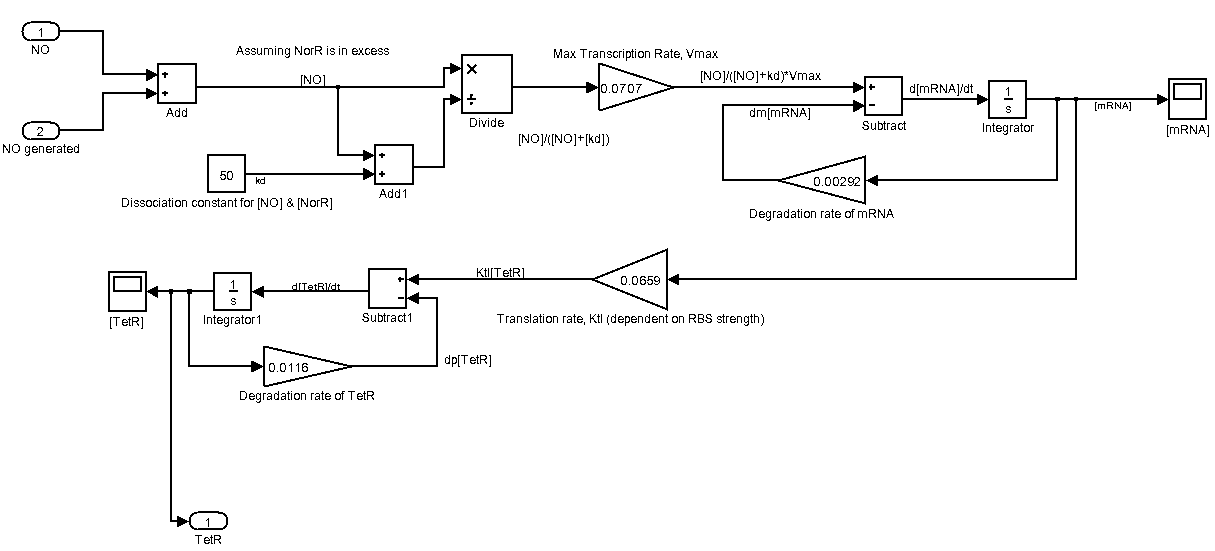Team:NTU-Singapore/Project/Prototype/Sense
From 2009.igem.org
| Line 18: | Line 18: | ||
[[Team:NTU-Singapore/Project/Proposal | Research proposal]] | [[Team:NTU-Singapore/Project/Proposal | Research proposal]] | ||
[[Team:NTU-Singapore/Project/Prototype | Prototype Design]] | [[Team:NTU-Singapore/Project/Prototype | Prototype Design]] | ||
| - | [[Team:NTU-Singapore/Project/Prototype/Sense | | + | [[Team:NTU-Singapore/Project/Prototype/Sense | Sensing Device « ]] |
[[Team:NTU-Singapore/Project/Prototype/Degrade | Degradation Device « ]] | [[Team:NTU-Singapore/Project/Prototype/Degrade | Degradation Device « ]] | ||
[[Team:NTU-Singapore/Project/Prototype/Image | Imaging Device « ]] | [[Team:NTU-Singapore/Project/Prototype/Image | Imaging Device « ]] | ||
| Line 26: | Line 26: | ||
<div class="grid_11 suffix_1 omega"> | <div class="grid_11 suffix_1 omega"> | ||
| - | <span class="title"> | + | <span class="title">Sensing <span class="bold">Device</span></span><br class="clear" /> |
| Line 42: | Line 42: | ||
| - | The ''' | + | The '''Sensing device''' will serve as the trigger for our system to start/stop its activity. As such, it is one of the most important constructs that we are working on. |
As we have elaborated earlier in the [[Team:NTU-Singapore/Project/Prototype | Prototype Design]] section, the '''device''' consists of mainly a a nitric oxide sensitive promoter that allows for transcription of TetR in high [NO], and is deactivated in low [NO]. | As we have elaborated earlier in the [[Team:NTU-Singapore/Project/Prototype | Prototype Design]] section, the '''device''' consists of mainly a a nitric oxide sensitive promoter that allows for transcription of TetR in high [NO], and is deactivated in low [NO]. | ||
| Line 179: | Line 179: | ||
| - | The following is our ''' | + | The following is our '''Sensing device''' represented as a Simulink system. ''Please click on it for a larger view''. |
[[Image:NTUpnosys.png|651px|center]] | [[Image:NTUpnosys.png|651px|center]] | ||
Revision as of 11:02, 20 October 2009
Sensing Device
The Sensing device will serve as the trigger for our system to start/stop its activity. As such, it is one of the most important constructs that we are working on.
As we have elaborated earlier in the Prototype Design section, the device consists of mainly a a nitric oxide sensitive promoter that allows for transcription of TetR in high [NO], and is deactivated in low [NO].
Let us now see how exactly the device works.
Abstract
Nitric-oxide (NO) sensing promoter (pNO) is a sigma-54 promoter that is regulated by transcription factor NorR, a member of the prokaryotic EBP (enhancer binding protein) family.
NorR is a NO responsive transcription factor which is activated by interaction with NO. Upon activation, NorR will convert the inactive promoter bound sigma-54 RNA polymerase complex to a transcriptionally competent complex in pNO to promote the downstream transcription of the gene.
Thus, expression of the gene downstream of pNO can be regulated by input of NO.
In our project to tackle atherosclerosis, we seek to locate the presence of the plaque via the detection of NO concentration in the blood vessels. It has been shown that the cholesterol-induced atherosclerosis would usually impair the NO synthesizing ability of the vascular endothelial cells, and thereby leads to a decrease of NO concentration in the plaque region.
By equipping our host cells (preferably T-helper cells; however in our experiment, we have used E.coli) with pNO, our system Plaque Out! will sense the decrease in NO concentration in the plaque region.
This will trigger an inverter module to:
- secrete cholesterol esterase (CHE) to digest the plaque
- produce infra-red signals to highlight the plaque’s location and
- release NO to dilate the vessel after digestion of plaque.
Hence, pNO would serve as the main switch for our system Plaque Out!.
Background
Based on the above described function, we have decided to include the entire NorR-NorV/W intergenic region (in E.coli genome) as our pNO promoter sequence. NorV/W genes encode for flavorubredoxin and an associated flavoprotein which would reduce NO to nitrous oxide.
These NorR and NorVW genes can be found in most proteobacteria, especially E.coli. And they are part of an important mechanism that allows bacteria to survive in anaerobic conditions as well as during nitrosative stress. In these cases, NorR protein serves as a NO-responsive transcriptional activator that regulates expression of the norVW genes.
Mechanism
In the absence of NO, the N-terminal domain of transcription factor NorR typically represses the ATPase activity of NorR.
It is only when NO binds to the ferrous iron center of NorR, it would stimulate ATP hydrolysis by NorR. The ATPase activity of NorR is boosted by binding of NorR to the three enhancer binding sites located upstream in the pNO.
The energy released by ATP hydrolysis enables NorR to activate pNO bound sigma-54 RNA polymerase complex (or RNA polymerase holoenzyme), thus initiating the transcription process.
Sequence
Using NCBI’s reference sequence NC_000913.2, the 186 bp NorR-NorVW intergenic region sequence is obtained using E.coli (strain: K-12; sub-strain: MG1655) as the search organism. The sequence is found in genome position 2830311 – 2830496. The NorR-NorVW intergenic sequence is as follows (5’ - 3’):
TCTTTGCCTCACTGTCAATTTGACTATAGATATTGTCATATCGACCATTTGATTGATAGTCATTTTGACT
ACTCATTAATGGGCATAATTTTATTTATAGAGTAAAAACAATCAGATAAAAAACTGGCACGCAATCTGCA
ATTAGCAAGACATCTTTTTAGAACACGCTGAATAAATTGAGGTTGC
The highlighted sequence is the sigma-54 promoter. The reason why we had included the entire intergenic region as our pNO promoter sequence is that there are 3 enhancer binding sites upstream of the sigma-54 promoter. These enhancer binding sites allow the transcription factor, NorR to bind to the DNA, thus leading to a localized increase in NorR concentration.
As such, the increase in localized NorR concentration facilitates the NorR to make contact with the sigma 54 – RNA polymerase.
Construct Design
In our system, Plaque Out!, we wish to regulate the production of TetR protein with respect to the concentration of NO.
The TetR protein would in turn regulate the production of Cholesterol esterase (CHE), Haem Oxyenase (HO-1), and Infra-red protein (IFP). Thus, our NO sensing construct is as follows:
Characteristic Equations
Ligand binding :
Using Hill equation to express the fraction of NO-bound NorR, we assume independent and non-cooperative binding of NO (i.e. Hill coefficient is taken to be 1).
Thus, fraction of NO-bound NorR is described as follows:
Since the dissociation constant Kd1 can be illustrated as:
Fraction of NO-bound NorR can be expressed as a function of available NO concentration, [NO]free
Transcription of TetR
Deterministic first order differential equation (ODE) is used to depict the NO-regulated transcription of TetR.
Where Vmax is max transcription rate & Dm is the degradation rate of mRNA.
Translation of TetR
Deterministic first order ODE is used again to represent the translation of TetR protein.
Where Ktl is the translation rate of mRNA & Dp is the degradation rate of TetR protein.
Modelling & Simulation
We make the following assumptions:
- Biological systems of transcription and translation are assumed to be linear and time-invariant
- Concentration of the transcription factor, NorR in E.coli is assumed to be in excess and constant. Hence, [NorR] is not taken into account in our model
- There is no time lag for NO diffusion from ext. environment into the cell
- Constant Degradation rates for mRNA as well as protein
Instead of modelling with TetR, we are using GFP as our output. This is part of our effort in trying to predict the wetlab characterization of pNO.
The following is our Sensing device represented as a Simulink system. Please click on it for a larger view.
Device Construction
Device Characterization
Literature / References
Please proceed here to view our full list of references.
 "
"







